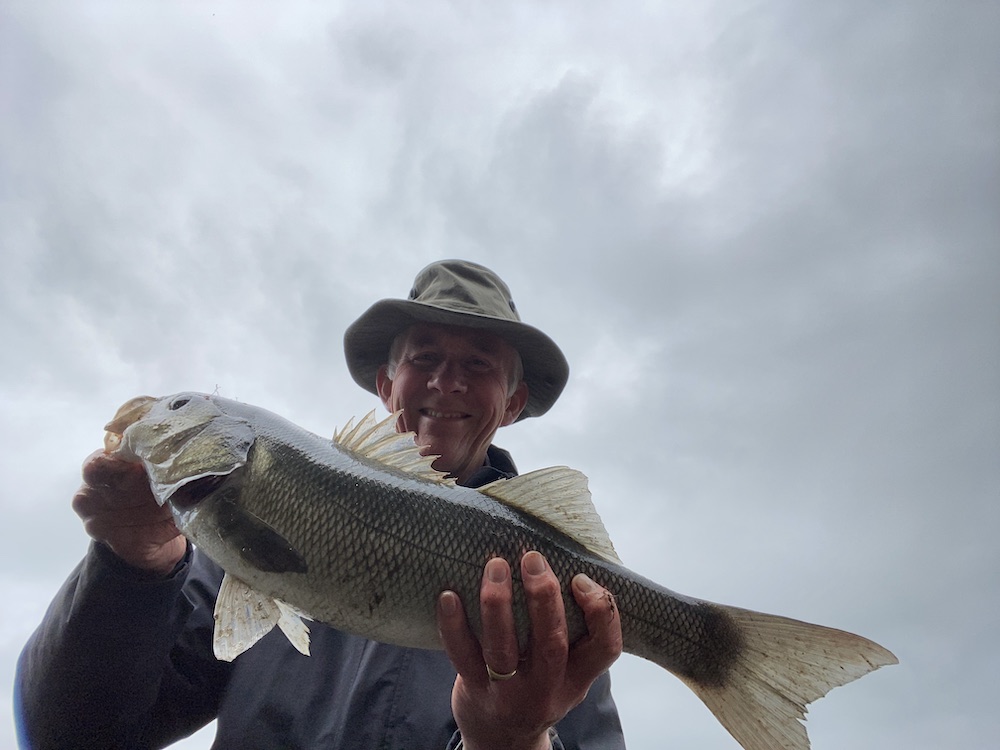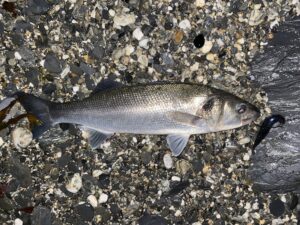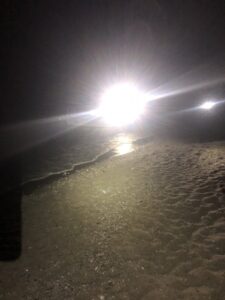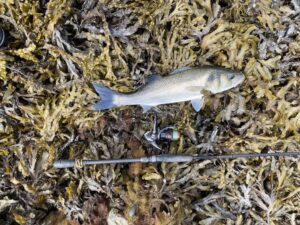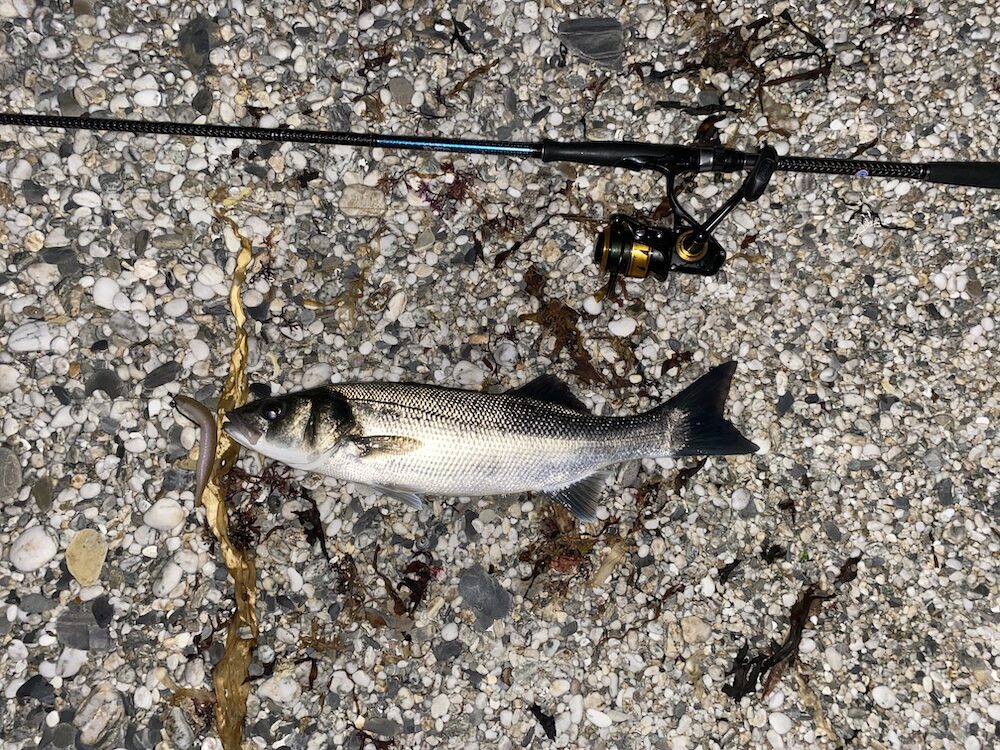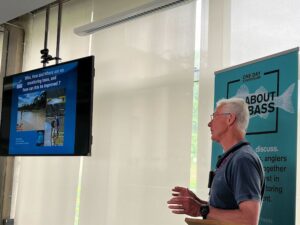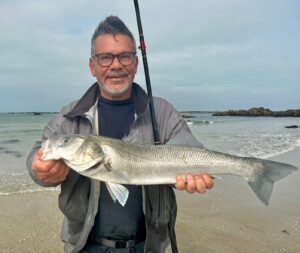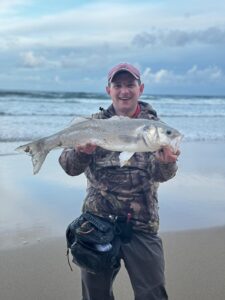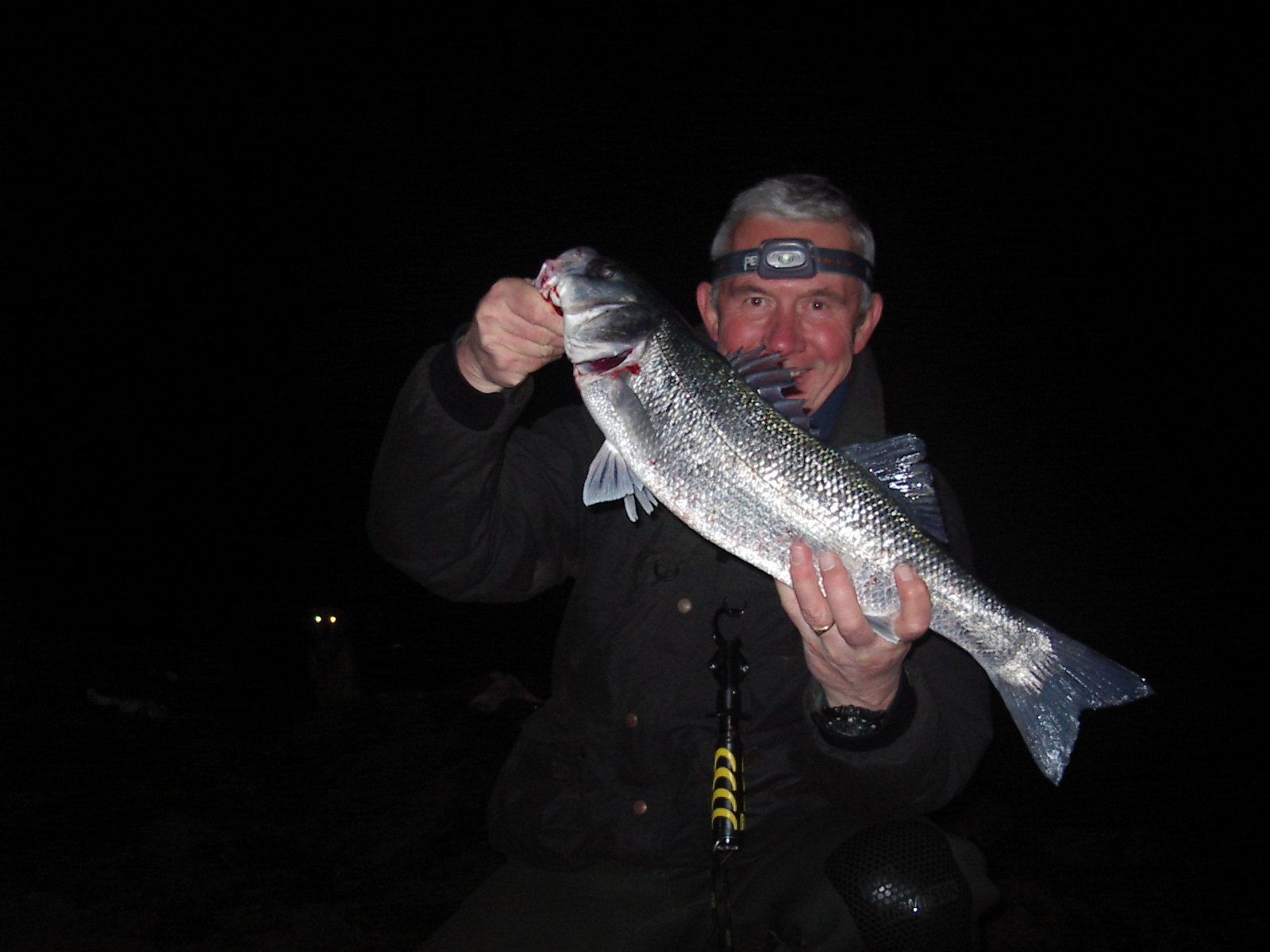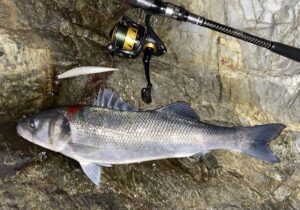It’s that time again – when people reflect on the year just finished, and think about the one ahead. Here’s my thoughts on another year in a bass angler’s life.
An enjoyable fishing year
I went fishing a bit less than in the last couple of years, mainly due to the bass survey work (see below), but still managed a good number of trips. My catch rate was up very slightly, and I caught fish on more trips – let’s hope this trend continues. However, as with the previous 2 years, I struggled to find larger fish, with just 3 fish of 60cm or over for the year – that’s only 2.6% of all the bass I caught! And my longest bass was just 62cm.
But fishing isn’t just about statistics – it’s about doing something you love doing, in ways you like doing it, and in places which are special to you. It’s about meeting challenges and learning new things, and about creating memories. Of course, a few more fish, especially bigger ones, would have really made 2024 for me, but all in all it was an enjoyable year, albeit with a tinge of sadness at the end.
The loss of a good friend
Just a short while ago I lost a good friend. Captain Derek Goodwin MBE did so much for sea angling and conservation, particularly regarding bass. He started doing juvenile bass surveys in the Helford estuary in Cornwall back in 1994. The unique and long-standing set of data he produced is much valued by scientists, anglers, conservationists and students. We will make sure Derek’s name lives on and and the legacy he leaves continues.
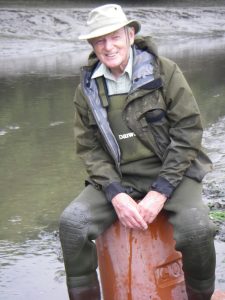
A slow start
The year got off to a slow start, things not becoming consistent until mid-July. Some would say this is entirely predictable, and I’m toying with not starting properly until then this year – we’ll see! I’d like to see if there are bass in estuaries all year round, so I’ll probably make the odd trip if we get any settled periods, especially during April, when the odd good fish could be on the cards.
From July on the fishing was quite good at times, with few blank sessions until early November, and up 7 fish a session on occasion. The year finished with a minor flourish, with the estuaries throwing up a few fish in late December. The hoped-for improvement on the coast with the migrating fish hasn’t materialised at the time of writing this.
New toys
I really wanted to catch a bass on a ‘Creature Bait’. I’m not really into fishing rods/reels etc – I’m happy to go use what others recommend (as long as they don’t cost ‘silly money’). But I am a sucker for new lures, and these Creature Baits are proper toys (bath toys as my mate John describes them!).
After a few failed attempts, I was lucky enough to catch my first bass on one at the beginning of August – and it was a beauty of 62cm! I wrote about this in an earlier blog. I had cast parallel to the shore, and the Megabass Sleeper Craw I was using landed a couple of feet out, among the weed. I turned the reel handle once and the lure was hit hard.
Once you’ve caught on a lure your confidence increases to the point where you start using it more and more. I’ve now caught 15 bass, of mixed sizes (62cm still the biggest), on either the Sleeper Craw or the 3″ Weighted Craw from BLUK. Just a simple turn-stop-turn style of retrieve, with one turn of the reel handle every couple of seconds or so, seems to be as effective as anything. I imagine this must mimic a crab scuttling across the bottom.
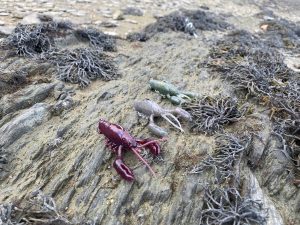
Things that go bump in the night
I had just landed a 58cm bass on the excellent Cornish Snax lure from BLUK. As I was moving along the reef, I slipped and went sprawling across the rocks. No damage done – or so I thought. On the next cast about a foot of the rod tip went flying seawards, having cracked off following damage from the fall.
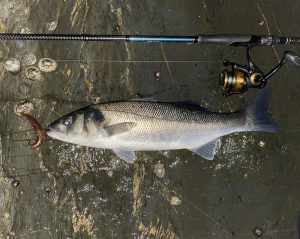
As if that wasn’t bad enough, after catching up with my fishing buddy Ian I went over again – this time banging my head on a rock on the way down! That put paid to my fishing for the night. Mind you, it could have been much worse. I have since replaced my boots with beefier studs, but I will have to give a bit more thought as to the type of mark I fish from now on – especially if I’m on my own (after all I am in my 70’s!) .
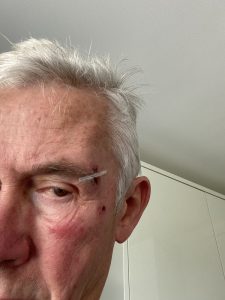
Simple bait fishing
Increasingly bass anglers are turning exclusively to lures. I love lure fishing myself, but bait fishing is also a great way to catch bass. It doesn’t have to be complicated, or involve loads of time collecting bait. What could be simpler, or nicer, than freelining a big fillet of frozen mackerel, or whole squid? All you need is a heavy lure rod, reel loaded with 20lb braid, bead and swivel on the end + 3 foot of 20lb mono/fluoro and an 8/0 circle hook. It can be a bit smelly though – especially if you leave a bait in your bag for several weeks!
I caught good bass on both these baits this year. Feeling the line slipping through your fingers, then having the patience to wait before bringing the bale arm over when you judge the timing is right, is the ultimate fishing high – always assuming the fish hasn’t dropped the bait!.

Goals for 2025
I’m fascinated with the lifecycle of bass – from eggs to old ladies! One of the aspects of this is their migration strategy. They are now thought to be a partially migratory species, so do some prefer to stay put in some years, rather than heading off to the spawning grounds? And where do the ones which aren’t mature enough to spawn go? To that end, I’m going to try to fish through the winter, and exclusively in estuaries. Mind you – it depends how cold it gets!
Science stuff
I’ve been lucky enough to indulge my passion for marine biology after my retirement from NHS Laboratory work. This year has been very significant for me in that respect.
Future marine biologists
I was delighted to be asked to talk to marine biology students at Plymouth University in February. It was great to give a fisher’s perspective on things to the marine biologists/conservationists/fisheries managers/policy makers of the future.
Sampling small fish
My involvement with the FinVision project on behalf of BASS has continued, and this year I took part in a fish sampling workshop on the Erme in Devon during the Summer. It was great to spend a day with anglers, students, scientists and fisheries experts, learning about this beautiful estuary, and methods of sampling small fish with nets.
On the Erme we saw tiny post-larval bass, a finding which was to be repeated in our surveys in Cornwall. 2024 was perhaps the most successful yet for our survey group, Cornwall Bass Investigations Group – in terms of the number of surveys we were able to carry out, and the number of ‘0’ group bass we found. Of course, a poor result is just as valuable, but not quite as inspiring!
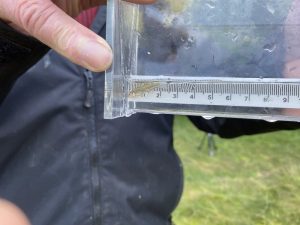
All About The Bass
I was so pleased to be involved in organising and delivering the ‘All About The Bass’ symposium at Essex University in July. I thoroughly enjoyed being part of a lovely team, who were very inclusive and welcoming to an elderly citizen scientist like myself! It was inspiring to hear from some of the leading scientists in the field of bass research. The workshop in the afternoon brought scientists, anglers and policymakers together to see if ways of fishers contributing more to science could be found. A report and some useful resources will follow soon.
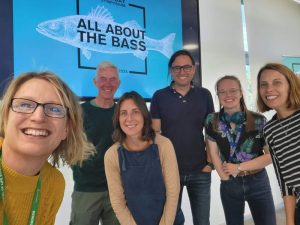
That’s it for this month folks. Sorry it’s a bit longer than normal, but these annual reviews cover a lot of ground, and I doubt that I’ll be posting again for a bit.
If you’d like to read more about my fishing (and other) exploits, why not order a copy of my book.
![]()

